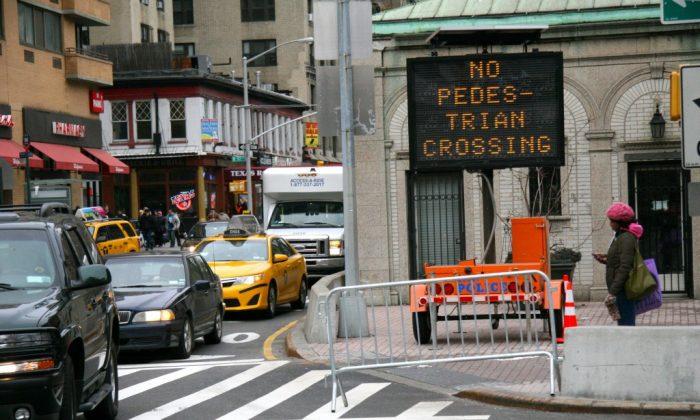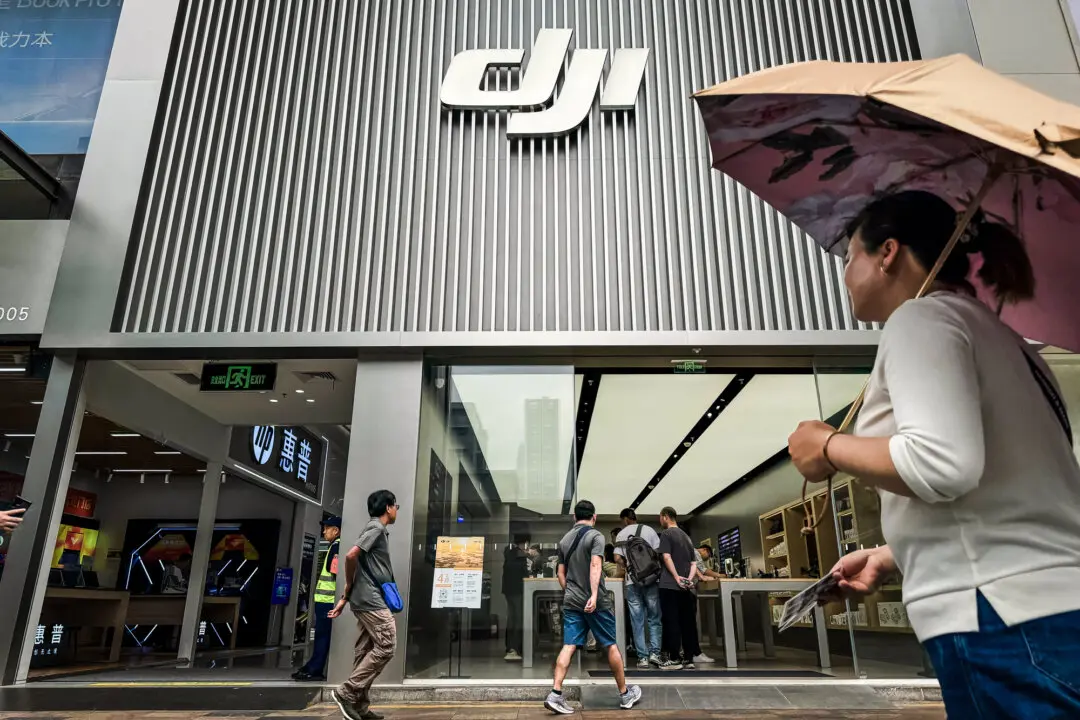NEW YORK—The Department of Transportation has proposed a list of street improvement to the intersection of West 96th St. and Broadway which was thrust into media spotlight after a series of pedestrian deaths this year.
The intersection is a convoluted one, with a four-phase traffic signal system with multiple conflicts between turning cars and crossing pedestrians.
“It’s really a recipe for impatience and poor decision making,” said Ryan Russo with the city’s Department of Transportation (DOT).
Thursday night, DOT proposed a redesign of the intersection in Northern Manhattan that could be completed sometime late March or in April.
Currently, Russo explained in a CB7 presentation, someone arriving at the intersection could wait up to a minute and 45 seconds just to get to the subway station located on the southern median on West 96th Street and Broadway.
The proposed plan gets rid of southbound left turns on Broadway, which would allow the DOT to simplify the traffic signals.
Currently, only about 70 cars per hour make those turns, and rerouting that traffic a few blocks to Columbus Avenue would only have a negligible difference, Russo said.
The change would allow pedestrians waiting on a corner to always have an opportunity to cross closer to the subway stop. Currently, a pedestrian may have to wait through two light changes to cross in a way that gets them any closer to the subway entrance.
Residents pointed out that the stretch across the Broadway intersection on West 96th Street is exceptionally long, which causes many cars to run red lights—sometimes unintentionally.
During the amber phase, drivers may not slow down thinking they can get across in time, and end up speeding through the crosswalk while pedestrians have the right of way.
Else, said one resident who was both a frequent pedestrian and motorist on that street, in being cautious drivers may find themselves in the middle of the road after the lights have already changed.
During street redesigns, Russo said, it’s routine to have traffic engineers look at the timing of the amber phase to see if adjustments need to be made. Residents suggested prolonging the period of red lights for cars as well.
DOT also wants to create a crosswalk between the north and south medians on Broadway, which many residents responded positively to. Even with the current system of traffic and walk lights, there is a period of time for a pedestrian to safely cross from median to median, but no such opportunity.
“Yield to pedestrians” signs will be put up around the intersection in the next few days as well.
One item the DOT was unable to offer was added street cameras, as New York State has control over how many the city can use.
Increasing safety at the intersection will require an enforcement component as well. Inspector Nancy Barry of the 24th police precinct was present to express her condolences for the recent fatalities in the area.
The precinct has moved from passing out jaywalking tickets to handing pedestrian safety tips.
“What we can do is enforcement, to show the community that we’re out there,” Barry said. “And to go after the fail to yield to pedestrians summonses.”
According to the precinct’s numbers, failure to yield to pedestrians was the number one cause of incidents, followed by distracted driving.
And this won’t be the only intersection to see improvements.
Thursday morning, Manhattan Borough President Gale Brewer met with community boards to make a list of every dangerous intersection to submit to the DOT and NYPD to investigate.
“Unfortunately,” Brewer said at the CB7 meeting. “We knew these spots were problems a long time ago and it wasn’t done fast enough. I’ve had similar fatalities in my family and feel very strongly about this.”
Cooper Stock
A mere 15 minutes before the fatal collision that killed 9-year-old Cooper Stock on West 96th Street, the family’s upstairs neighbor had crossed the same intersection.
“It could have happened on any corner, but it happened on our corner. It could have happened to anyone, but it happened to our downstairs neighbor,” the neighbor said at a community board meeting Thursday.
He had just walked through the crosswalk minutes ago with his own 9-year-old son and was sitting down in his apartment when he heard the incident below.
“Day after day, after so many years, you just tune out the traffic. You walk out there and it’s a stream of traffic,” he said. “But if you think about it, as far as intersections are, it’s crazy.”





